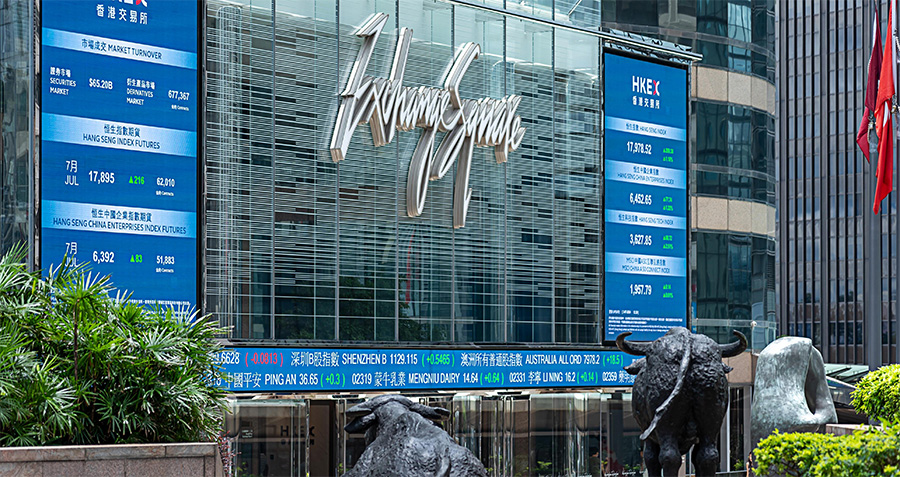In January, the world’s largest hard disk maker, Seagate, shut down its manufacturing plant in Suzhou, cutting over 2,000 jobs, becoming the latest global manufacturing giant to scale back its China operations.
“As part of our continual optimization of operational efficiencies, Seagate has made the difficult decision to shut down its factory in Suzhou, China,” the company said. It did not give further information on the decision, but it is a process that other major international companies are facing, including Danone, Coca-Cola and Sony.
The shift, with deep implications for the global economy as well as China’s continued growth, is being driven by a confluence of factors including the rising costs of manufacturing in China, the slowing economy and growing competition from local rivals. And it is leading not only to a decline in growth of FDI, but also to an interesting shift in where FDI is going.
“It has been a trend for the last couple of years that China is shifting from merely a manufacturing base to a country to sell products as well,” says Robert van Aert, Operational Manager with Maxxelli Consulting, a Chengdu-based firm that assists FDI projects in China, with ten offices across the country. “We clearly see this shift among our customers… we trust this trend to continue for the next decade or two.”
Foreign direct investment to China increased 3.9% on the year to RMB 731.8 billion in the first 11 months of 2016—the 2015 expansion was 5.6% by comparison.
“In our practice we see a significant decline in China-bound FDI,” says Bernd-Uwe Stucken, a corporate lawyer at Pinsent Masons LLP in Shanghai. “I should mention that with a German background my practice is focusing mainly on the manufacturing sector which is particularly affected by the current trends.” Stucken is also a former chairman of the Shanghai Chapter of the German Chamber of Commerce.
Inward investment has been an incredibly important catalyst for China’s economic development, bringing in capital, technology and know-how, making China the world’s factory and lifting tens of millions of people out of poverty.
“But China is no longer so fresh and attractive to foreign investors [because] return on assets is falling while the country’s economy slows,” says Yang Weixiao, an analyst with Founder Securities, a Chinese brokerage. Yang also said that increasing labor costs have became a heavy burden to foreign enterprises, especially manufacturers, who can cut costs by moving to Southeast Asia.
In January, China announced that its 2016 full-year economic growth was 6.7%, and at the National People’s Congress in March, Premier Li Keqiang announced that the 2017 growth target had been reduced further to 6.5%, the lowest in a quarter century. However, the days of China presenting opportunities for profit for smart investors are far from over. Rather, the situation has changed, bringing with it new investment trends, and at the same time a host of new challenges.
As the Chinese authorities are now fond of saying, the country is facing a “new normal.” The country’s economy is shifting from labor-intensive industries to services, as well as high-tech manufacturing and higher-value sectors. China’s large population now serves more as a consumer base rather than an endless supply of cheap workers, and inward investment is adapting.
“FDI into services increased by 8% (in the first 11 months), whose weight rose to 70.1% of FDI in the entire country,” said Wang Shouwen, Vice Minister of the Ministry of Commerce (MOFCOM) at a press conference in January.
Actually utilized FDI in the “high-tech service sector” amounted to $12.8 billion, up a massive 97.7% year on year. By contrast, FDI into manufacturing declined by about 10%, although high-tech manufacturing still increased by 3.6%.
The declining sectors are easy to guess: mining, textiles, chemicals and other pillars of the so-called old economy. Many of these face similar pressures, such as overcapacity, making them unattractive not only for foreign capital, but domestic investors as well.
Although the changing shape of FDI in China is complex, it is also a natural progression. The bigger concern is treatment of foreign investment by the powers-that-be. China’s top leaders have given public reassurances that they will treat foreign and domestic companies equally and let market forces play a larger role. But 55% of respondents in an annual survey of members of the American Chamber of Commerce (Amcham) in China this January said foreign companies were treated unfairly.
The survey showed more US businesses are shelving investment plans in China—the percentage of companies that rate China among their top three investment targets fell to 56%, the lowest since 2009. Four out of five companies said they felt less welcome in China than before, nearly double the rate from three years ago.
“You can see protectionism in certain sectors,” says van Aert. “The Chinese government either totally blocks foreign providers or implements regulations that Chinese companies need to decrease the market share of foreign suppliers in the coming 5 to 10 years.”
One of heightened concerns among foreign companies is that the Chinese authorities are trying to force foreigners out of some large and fast-growing markets. Media reported in 2015 that the Chinese government adopted regulations requiring companies that sell computer equipment to Chinese banks to turn over proprietary source code, submit to invasive audits and build backdoors into products. Many foreign technology companies could be hurt by the rules as they would be concerned about intellectual property, security and, in some cases, United States export law. The Amcham survey respondents also said new cybersecurity rules and other regulations made it harder to compete against local companies.
The Chinese authorities do tend to favor domestic suppliers in the market over foreign competitors where they have a say, according to some analysts.
“It’s safer to choose domestic companies when it comes to government-related projects,” says Peng Ma, an analyst with International Data Corporation (IDC), an IT market research firm. It should also be noted that in China it is often difficult to tell what is a government-related project and what is not, given the prominence of state-owned enterprises in the economy.
However, there are important exceptions when it comes to leading technology. Last April, the network builder Cisco Systems partnered with Guangzhou, a southern Chinese city, to build a “model smart city.” Cisco planned to establish a head office for innovation in Guangzhou to develop technology and create a cloud platform to serve the smart city industry—a project in line with wider goals to increase connectivity across many spheres of the economy and society. The project is expected to generate $15 billion a year in economic output in the city, and follows on Cisco’s $10 billion invested to support other local IT projects and innovation in 2015.
But Peng Ma said Cisco’s case is rare, as many smart city projects would grant the companies access to the governments’ data and daily operations.
“The government has concerns over cyber security,” Ma says. “They would like to offer the domestic companies chances to grow up.
Only to company’s of Cisco’s caliber, where China has much to gain, are such opportunities likely available.
Yet another concern for foreign investors in China is stepped-up capital controls, put in place in the past year as the RMB depreciated 7% against the dollar, the biggest annual loss since 1994. Foreign investors and foreign businesses generally are increasingly concerned about their ability to repatriate profits from China, which inevitably impacts on investor sentiment.
“Stricter foreign currency controls potentially make it harder to get profits out of China and thus kind of scare investors [off],” says van Aert.
As part of efforts to stem capital outflows and stabilize the RMB, the central bank announced late in December that it would effect new rules on overseas currency transfers from July 2017. Citing bankers and officials, The Wall Street Journal reported in December that China’s foreign-exchange regulator has instructed banks to sharply limit how much money companies move out of the country. Before, it was possible for big companies to move $50 million, or the RMB equivalent, in or out of China with minimal documentation. Now, these people say, the cap is the equivalent of $5 million, a pittance for many corporations.
“Currently, many potential investors have not yet realized what this will mean for their plans,” says Bernd-Uwe Stucken. “This very indirect approach is detrimental to the trust in the reliability of the rule of law in China and trust is one of the key elements for investors.”
But although this “new normal” in China has brought with it such significant challenges, top multinationals are not backing away from the world’s largest marketplace.
Apple is a good example. It is worth considering the state of the company’s business in China, both direct and indirect, because it has in many ways been the face and a key driving force behind foreign investment into this country in recent years. The company, which contracts its manufacturing with Taiwan-based giant Foxconn and others, has been investing in China in ways that reflect the changing economy.
Although Apple’s China sales slid last year—smartphones were down 30% in the third quarter—it continued to build more stores. In January, it opened its 39th mainland store in the southwestern provincial capital of Kunming, speaking to the company’s desire to reach more and different customers. And it is pouring more into its established base in eastern China, which is on average richer, opening its seventh store in Shanghai last December. According to Business Insider, it costs about $10 million to open an Apple store.
The company also sought to diversify its business in China, investing $1 billion into ride-hailing service Didi, which defeated Uber last year following a brutal competition. And on top of that, Apple also announced last year that it plans to open a second R&D center in China, in Shenzhen, during its CEO Tim Cook’s visit to Beijing. The first center, in Beijing, cost $45 million. This, too, is in line with the new reality of China’s increasingly well-off consumers.
“A research and development center will help Apple to further localize its product,” says Jin Di, an analyst with IDC in Beijing. “The key thing for Apple now is to lure Chinese customers.”
Apple, of course, is not the only foreign company still making big investment bets in the China market, many of them speaking to the transformed environment. American pharmaceuticals giant Merck announced a €250 million drug manufacturing investment in China last November—demand for healthcare is skyrocketing. And this February, California-based chip maker GlobalFoundries announced a $10 billion semiconductor plant in the southwestern city of Chengdu. Chips are of course high value-added items.
US global retailer and the world’s most profitable company, Walmart, joined with Chinese online retailer JD in investing in the online grocery business. The pair announced a joint investment of $150 million in August, and Walmart followed up in October with a $50 million investment in e-grocery startup New Dada. Here the bet is again on China’s changing customers.
But although that may be encouraging, new uncertainty is emerging, but this time from the US. Following a campaign that emphasized job creation and domestic business expansion, President Donald Trump vowed to bring manufacturing back onshore. Many companies may get caught between the hardening trade stances of Washington and Beijing.
A survey conducted in January by Bank of America Merrill Lynch found that 29% of investors believed that a trade war and protectionism are the biggest current threat to markets. While not exactly a consensus, it is telling that even a month previously, very few investors had such concerns.
That said, growth is growth, and despite all the various challenges and uncertainties, China’s economy is still expanding far faster than most. But to invest into China, foreigners need to be able to spot the right opportunities and read the tea leaves correctly.
In December, China proposed to cut more sectors from the “negative list” of industries that are barred from foreign investment. Those include new energy, credit research and ratings, road passenger transportation and more. The proposal also said the government would continue to encourage foreign investment into modern agriculture, advanced manufacturing, high technology, energy and environmental protection and modern services, all of which align with China’s vision for an advanced economy and developed market.
“China offers a good investment environment [for foreign investors] as China’s economy maintained healthy growth,” said Wang Shouwen at the press conference.
How true that is may depend on what exactly a given company wants to invest in, not to mention the political developments during what is sure to be an exciting year. Still, the positive message is grounds for optimism.
“Also,” Wang added, “China’s domestic market is a very big potential market with strong attractiveness.” And of that, there can be no doubt.





















